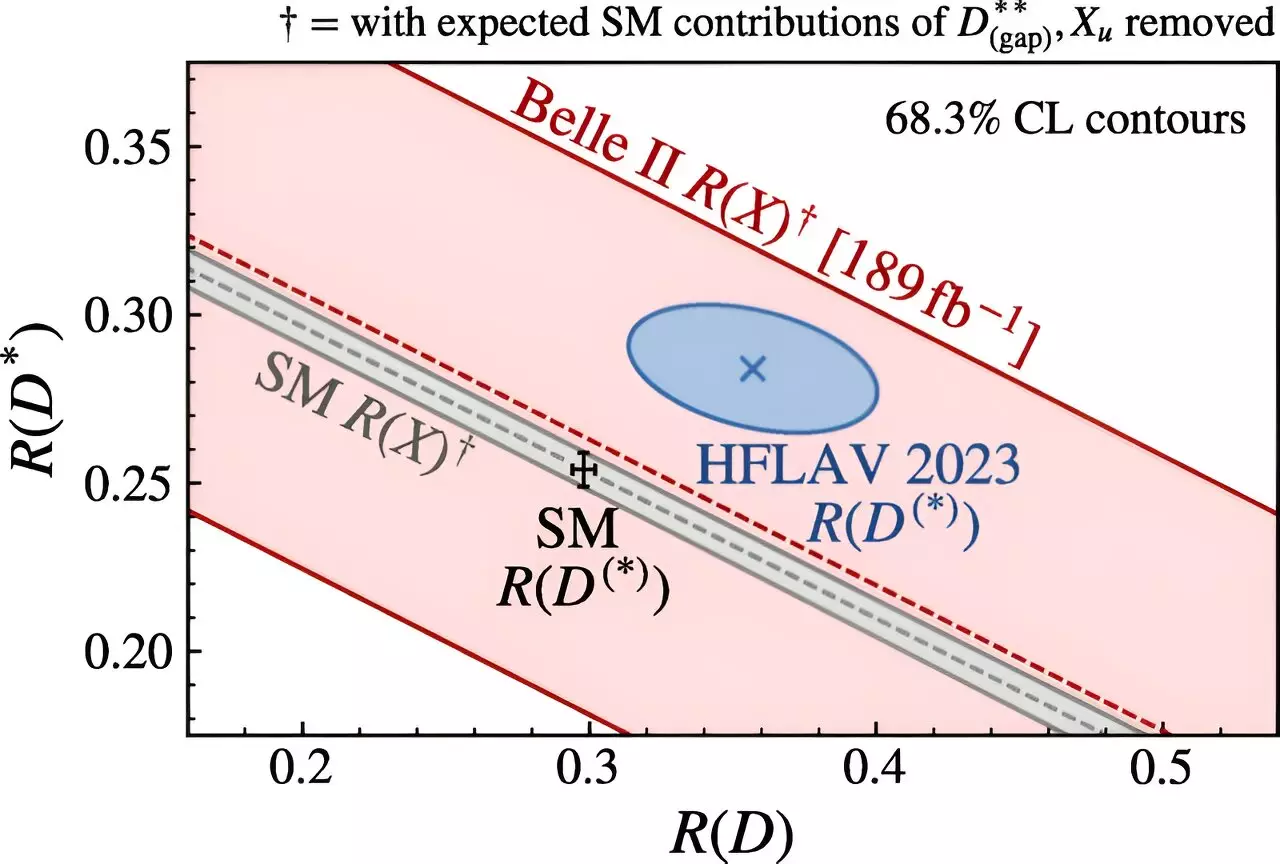The world of particle physics is a compelling yet intricate realm, part of which is being explored by the Belle II experiment, an ambitious research initiative based in Tsukuba, Japan. This remarkable endeavor aims to advance our understanding of weak interactions and investigate the enigmatic nature of exotic hadrons—particles that challenge our traditional understanding of matter. Utilizing the cutting-edge Belle II detector, which operates in conjunction with the SuperKEKB particle collider, researchers delve deeply into the heart of the standard model of particle physics to either uphold its longstanding principles or to potentially unveil new forces and particles that elude current theories.
This initiative is not simply about collecting data; it’s about engaging with questions that have confounded scientists for decades. Belle II aims to refine the parameters associated with weak interactions, which are fundamental to our understanding of how particles behave and interact at subatomic levels. In a groundbreaking paper recently published in *Physical Review Letters*, the Belle II Collaboration reported a significant milestone: the first measured ratio of the tau lepton to lighter leptons within inclusive B-meson branching fractions. This pivotal study tests the principle of lepton universality, a concept asserting that all charged leptons interact in an identical manner with the fundamental forces.
Lepton Universality: A Fundamental Concept Challenged
The lepton universality principle is a cornerstone of the standard model, suggesting that the three charged leptons—electron, muon, and tau—should behave identically under specific interactions. However, any deviation from this principle could signal physics beyond the standard model, potentially revolutionizing our understanding of the universe. As noted by Karim Trabelsi, spokesperson for the Belle II Collaboration, the measurement is crucial because it directly contributes to our grasp of interactions at the most fundamental level.
The motivation behind this investigation arises from a peculiar tension noticed in pre-existing measurements. Past findings have hinted at discrepancies that could either strengthen the current framework or suggest new physics, especially concerning the heavier tau lepton in comparison to its lighter counterparts, the electron and muon. This research breaks new ground by exploring inclusive decays—B meson production without the restriction of accompanying particles, a significant departure from earlier studies that focused narrowly on exclusive decays with charmed mesons.
A Paradigm Shift in Experimental Physics
The Belle II team’s work can be seen as a paradigm shift in the methodology of particle physics. Traditional experiments often limited their scope to specific decay channels and interactions. In contrast, the Belle II approach considers a broader range of decay processes, allowing scientists to gather more comprehensive data about leptonic interactions. By analyzing events where B mesons decayed into a variety of particles, researchers can examine and compare the momenta of the resultant leptons, providing a more nuanced view of their behavior.
Utilizing sophisticated analysis techniques, Belle II researchers carefully distinguish between prompt leptons—those originating directly from B meson decays—and those produced from tau decays. The results hinge on meticulous measurements of lepton momentum and energy characteristics, a process designed to separate the overlapping signals in a crowded data landscape. Such capabilities showcase the advancement in experimental techniques that characterize modern physics research.
Forging New Paths in Particle Discovery
While the results thus far are compatible with the standard model, they also harbor the tantalizing potential of unveiling new physics. This experiment has not only reignited interest in lepton universality but has also reaffirmed the importance of collaboration and meticulous analysis in modern-day physics. Trabelsi articulates the essential nature of increasing data volumes, suggesting that as Belle II continues its operations, the precision of their measurements will improve, leading to deeper insights into the fundamental workings of the universe.
Moreover, the scientific community eagerly anticipates the implications of Belle II’s findings on future research. A comprehensive understanding of lepton universality could usher in new theories that redefine our perception of matter and energy. With ongoing data collection efforts, the Belle II team stands poised to make even more impactful contributions, potentially identifying structural flaws in the standard model and proposing alternative explanations that could shift the paradigm of particle physics.
In essence, the Belle II experiment exemplifies the dynamic interplay between experimentation and theoretical physics. It’s a vivid representation of how scientific inquiry drives humanity’s relentless pursuit of knowledge, seeking answers to questions that challenge the boundaries of our understanding. As we move forward into this new era of particle physics, one thing remains clear: the universe is holding onto secrets waiting to be revealed by the next generation of researchers.

